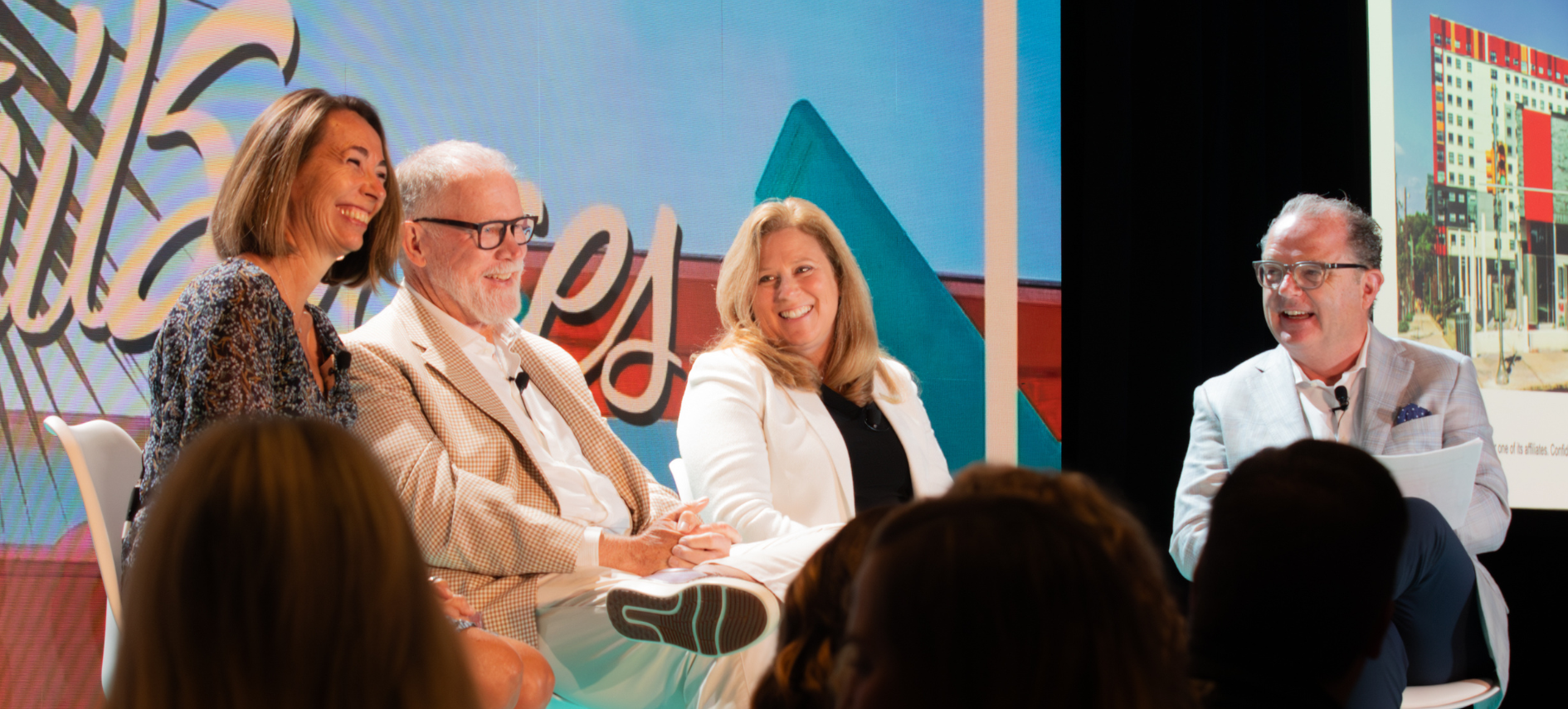"This isn't how I design. You've got me sitting in front of my screen, and all I'm doing is typing, editing, creating paragraphs. That's not design," complained one creative director to Paul Wolski, SVP Creative Director at Miller Zell, capturing the resistance many teams face when introducing AI tools. At RetailSpaces, Paul shared the messy reality of integrating AI into a design company with a 60-year legacy—and the practical lessons that emerged from their trial-and-error approach.
The Challenge: Getting a Diverse Team on Board
Miller Zell's design team represented the full spectrum of AI awareness: some designers had little knowledge, others were independently experimenting at home, and a few worried about job security. Rather than mandate adoption, Paul chose to demystify AI through hands-on experience.
His solution was elegantly simple: a creative exercise where every designer had to use an AI platform with three prompts—their favorite destination, favorite color, and favorite artist or movement. The results ranged from surreal illustrations to quirky photojournalism, including Paul's own "stained glass sushi" creation.
The unexpected benefit: Designers began coaching each other, sharing breakthrough prompting techniques, and collectively overcoming their apprehension. Paul turned their AI-generated images into a physical gallery at Miller Zell, which now serves as a conversation starter during client tours.
Six Practical Takeaways for Your Team
1. Don't Let the Tail Wag the Dog
AI is a tool, not a replacement for creative strategy. Define how it fits into your overall creative process rather than letting it drive the process.
2. Train It to Make It Your Own
Feed AI your brand assets, attributes, tone of voice, and critical project data. Paul emphasized that Miller Zell's committee focused on establishing protocols to ensure AI outputs aligned with their standards and avoided copyright issues. The quality of input directly determines the quality of output.
3. Accept That Innovation Still Resides with Humans
AI excels at generating multiple options and solutions, but breakthrough innovation requires human insight and strategic thinking. Paul noted that while AI can produce visually compelling results, it often lacks the practical grounding that experienced designers bring to projects.
4. Master the Craft of Prompting
Effective prompting requires patience and trial-and-error. Paul observed that "it requires a lot of patience when it comes to prompting" and stressed there's "a degree of trial and error" involved. He noted that designers who became "avid learners" and embraced the prompting process became the team's in-house experts. Treat it as a skill that improves with practice, not a magic button.
5. Establish Clear Boundaries Around AI Use
Paul learned this lesson when a sales colleague bypassed the design team entirely, presenting AI-generated restaurant concepts to solve a project challenge. While the intention was good, it undermined the design process and professional expertise. Establish protocols about who uses AI tools, when, and how they integrate with your existing workflow.
6.Serve as the Brand Gut Check
"AI can swing wildly, it can misinterpret input," Paul warned. He emphasized that at a time when brand authenticity is critical and stores are the greatest manifestation of brands, designers must ensure AI outputs "sound right, look right, feel right." AI can deliver results that are technically correct but miss the brand's authentic voice or practical requirements.
The Bottom Line: Give Yourself Permission to Learn
Paul's most valuable insight was giving his company "permission, time, and runway to approach this in a way that makes sense for us" rather than getting caught up in AI hype.
Miller Zell formed a committee to vet platforms and establish protocols, focusing on avoiding copyright issues while creating framework for safe experimentation. They didn't rush to implement AI across all departments simultaneously—instead, they started with contained experiments that provided learning opportunities without jeopardizing client work.
Paul's experience offers a clear roadmap: start with low-stakes creative exercises, expect resistance and embrace it as valuable feedback, and always position AI as a supporting tool rather than a replacement for human creativity and strategic thinking.
As Paul concluded, "Give yourself the space to find AI's place at the table"—whether that's in design, project management, or any other aspect of retail development. The key is approaching it thoughtfully rather than reactively, building competence before committing to transformation.
The Bottom Line
Jensen's closing message resonated with optimism for the entire industry: "Retail is where it's at, people. Every sign from these customers tells us that they love getting up and going to a store, and that's really exciting. We're back at it."
The key lies in constant curiosity about changing youth culture and the willingness to abandon legacy assumptions when data points in new directions.
Watch his full talk below 👇
Posted by
Physical Retail Reimagined.
RetailSpaces is a community for store development and design innovators.
March 29-31, 2026 | San Antonio, TX
Learn More!







Comments